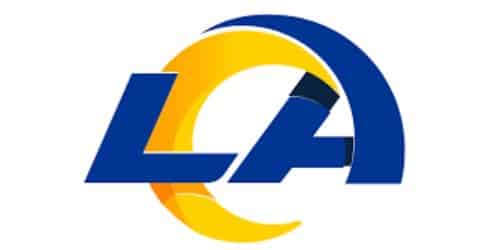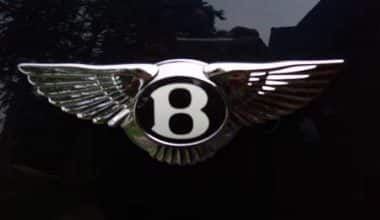The Los Angeles Rams have relocated several times in their more than 80-year history. They first played in Cleveland (from 1936 to 1946), then in Los Angeles for nearly 50 years. St. Louis became their home in 1995, and the club returned to Los Angeles in 2016. These facts help explain the Rams logo’s history and why its name has changed several times. It will also help you understand the reasons behind a wide range of rebranding decisions on the Rams logo, which the company has made over the years, all of which will be covered in this article.
Overview
The Los Angeles Rams are an American football professional team based in Los Angeles, California. The Rams are a member of the National Football Conference (NFC) West division in the National Football League (NFL). The team was established in 1936.
The franchise has moved several times in its nearly 85-year history. It was founded in Cleveland, so it was initially based there. Its first relocation occurred in 1946. On January 12, 1946, team owner Dan Reeves asked the NFL for permission to move his team to Los Angeles. At the time, the Los Angeles Memorial Coliseum could hold 105,000 people, much more than the Cleveland Municipal Stadium.
Georgia Frontiere suggested the second move because she thought the club could only be saved if it left Los Angeles. Under her pressure, National Football League Commissioner Paul Tagliabue gave in and agreed to move the team. The third relocation occurred following the 2015 season. Several clubs applied to move to Los Angeles. NFL officials chose the Rams. On January 12, 2016, the Rams officially returned to Los Angeles.
The club had a large number of owners.
Homer Marshman, the founder, was the first. He ran the franchise until 1941, when he sold it to Dan Reeves, who ran it until 1971. Robert Irsay (1971), Carroll Rosenbloom (1972-1979), Georgia Frontiere (1979-1995), Georgia Frontiere with Stan Kroenke (1995-2008), Chip Rosenbloom, Stan Kroenke, and Lucia Rodriguez (2008-2010). Stan Kroenke is now the team’s sole owner.
Since the franchise moved from town to town so often, it makes sense that its name changed often. Every time, the team substituted the name of another town for “Rams.” And the term “Rams” refers to Cleveland University’s sports team, the Fordham Rams.
The History of the Franchise
The Cleveland Rams were the team’s original name when it was founded in 1936. Homer Marshman, an Ohio-based attorney, and Damon Wetzel, a former Ohio State football player, founded the franchise.
Wetzel, a former player for the Chicago Bears and the Pittsburgh Pirates, was named general manager, and Marshman was named franchise principal. With Marshman’s support, Wetzel chose the name “Rams” after his favorite college football team from Fordham University.
The team joined the newly formed American Football League and finished second in 1936. When they joined the NFL the following year, they were assigned to the West division. The team lost more games than it won over the next few years.
The Rams have played for three cities in their nearly nine-decade career, including Los Angeles, Cleveland, and St. Louis.
The team first relocated from Cleveland to Los Angeles in 1946 after their new owner Reeves threatened to leave the NFL if the request was not granted. This was the catalyst for the NFL USA’s first coast-to-coast sports association and the change of the old Rams logo.
After nearly 50 years in Los Angeles, the team decided to relocate to St. Louis due to dwindling fan support due to years of poor team management and even worse luck. This is where the original Los Angeles Rams logo evolved into the St. Louis Rams logo.
The team relocated to Los Angeles for the 2016 NFL season after the stadium owners in St. Louis failed to meet the contract requirements they agreed to with the Rams. The team was renamed the Los Angeles Rams and won the 2021 NFL Championship against the Cincinnati Bengals.
The Evolution of the LA Rams Logo
#1. From the Cleveland Rams logo to the Los Angeles Rams logo
The Rams logo has undergone numerous changes throughout its nearly nine-decade career, primarily to reflect changes in their host cities. The old Rams logo, which they used in Cleveland, featured a stylized ram’s head, which worked well with the team’s name.
The Rams were the first NFL team to wear helmets with the franchise logo. The ram horns have been seen on team helmets since the late 1940s, with minor variations in style and color over the years.
Cleveland Rams Logo
Beginning with their entry into the NFL in 1937, the team claimed Cleveland as their home for the next eight years. This period of their career was marked by misfortune and bad luck, which resulted in them losing season after season.
After missing the 1943 season because they didn’t have enough players because World War II was getting worse, the team played football again in 1944. They had their first successful season in 1945 when the Rams won the NFL championship against the Washington Redskins in their final year as a Cleveland franchise.
During their time in Cleveland, the Rams used two versions of the Rams logo. The first iteration of the logo featured a ram’s head with curling horns, facing right and colored in blue and white. The second Cleveland Rams logo debuted in 1942, with the ram’s head now facing left and colored in gold and blue. The ram’s head was a different style in this logo, but the design still represented the team name.
LA Rams Logo (First Time)
The next five decades of their career were spent in Los Angeles. The LA Rams logo underwent several changes in response to artistic trends during this time. The team was initially quite successful during this era. Nonetheless, several poor seasons resulted in a dwindling fan base over time.
The team used the old Rams logo designed the year before in Cleveland from 1946 to 1947, their first year in Los Angeles. The new Rams logo, which featured a detailed ram head facing left and was colored white and yellow, was introduced in 1948. This logo was used for 23 years, making it their longest-running.
In 1972, the team logo was redesigned, with Ram’s head now facing right. This logo was used until 1983, with minor color and design changes. Between 1984 and 1988, the team abandoned Ram’s head in favor of a bold and brightly colored wordmark logo. Despite having a good logo, the experiment did not go well. The team’s blue helmet with yellow curling horns was replaced with a 2D image in the symbol. This version was used for the Rams’ final six seasons in Los Angeles.
St. Louis Rams Logo
After relocating to St. Louis in 1995, the franchise remained in the city for the next two decades. The team’s first ten years in the new town were some of their most successful, with the team acquiring some fantastic players and playing some of the best games in the NFL.
Despite a strong lineup, the team failed to make the playoffs year after year after 2005. The team’s franchise decided to return to Los Angeles in 2015. St. Louis had been unable to meet the terms of their contract, which required them to provide a proper stadium and new facilities for the team to keep them in the city.
Read Also: BURBERRY LOGO: An Iconic Brand
The team made several changes to the logo over the next twenty years, from 1995 to 2015. The first change was a redesign of the Rams logo, which now features the team’s name in blue, white, and yellow stretching beneath the St. Louis arch. The team’s name was written in a pair of complementary fonts on the symbol, and the word “Rams” was written in a stylized font with serifs. The city name was shrunk and placed above the team name in an italicized and smaller font, with a color palette of blue, gold, and white.
In 2000, the team switched back to an image-based logo, this time featuring a cartoon-style ram’s head and neck with curling horns. This logo was used until 2015, when the team relocated back to Los Angeles for the 2016 season, with minor changes in the shades of the colors used.
LA Rams Logo (Current)
After St. Louis, the Rams relocated to Los Angeles in 2016, and the franchise was dissolved. Following the 2015 NFL season, the league announced that any team granted permission to relocate to a new city would be required to pay a $550 million fee.
The NFL approved the Rams’ relocation to Los Angeles after receiving relocation applications from the Oakland Raiders and the San Diego Chargers. After being re-energized by massive fan support, the team began to see success after years of mediocrity, even hosting a league championship title match.
When the team returned to Los Angeles nearly two decades later, they changed the logo to reflect the change in cities but kept the main artwork intact. The color palette changed again over the next three years, from 2017 to 2019, opting for a simple deep blue and white color scheme, eventually becoming the LA Rams logo in 2022.
Finally, the team returned to a wordmark logo rather than an image-based one. The word “LA” is now featured in the new logo, with the top of the letter A curving into a stylization of the classic ram’s horns. The logo is done in a blue and yellow color scheme, making it a compelling yet simple statement about the team’s return to Los Angeles.
#2. Logomark Los Angeles Rams Logo
These Rams logos serve as the team’s primary visual identifier, alone or in conjunction with their wordmark logos. The LA Rams logo has undergone major and minor changes during its nearly eight-and-a-half-decade career. Some of these changes were well received by the fans, while others were not.
Let’s take a look at the main Rams logos over the years.
The Original LA Rams Logo (1937-1942)
The first team logo for the rams was quite simple and easy to associate with the team. Released in 1937, the logo featured a detailed ram head with tightly curling horns. The image was drawn in profile and faced right.
The logo was drawn in blue, with solid blue horns outlined in white. This made it easy to remember the franchise’s name at a glance. The use of these accents made the logo more detailed, which made it popular with the fans.
The First Redesign (1944-1947)
The Cleveland-based NFL logo was redesigned in 1944. The new Rams logo had sleeker and bolder lines, blue and yellow colors in the palette, and the profile was shifted to the right. This redesign improved their logo’s visibility in various mediums while retaining its impact.
The team relocated to Los Angeles in 1946 but kept the same logo for a year with minor changes. To distinguish it from the Cleveland version, the emblem now used a lighter color palette for the shades of yellow and blue. Meanwhile, the team used that time to create a new logo representing the relocation to Los Angeles.
The First LA Rams Logo (1948-1971)
The first explicitly designed Los Angeles Rams logo was released in 1948, replacing blue with plain white. The ram’s head and horns were altered, with fine details outlined in black. To give the ridged horns depth, the horns were colored yellow and accented with black lines.
Revamping The Color Scheme (1972-1983)
In 1972, the logo was redesigned again, with a simpler color scheme of white accented and outlined in black. The new logo was simple, but it was stylish. The resulting design was a way to safeguard the franchise’s cherished values of loyalty, dependability, and, most importantly, professionalism.
In 1975, the outline and accents of the logo were changed to a dark blue color. In 1981, the white color was replaced with dark yellow, restoring the original blue-and-yellow color scheme.
1989-1994
After a few years of a lukewarm response to a wordmark logo, the franchise unveiled a new logo featuring a blue helmet with yellow ram horns painted on the sides. The artwork was appealing, with smooth lines and bright colors representing the Rams as a football team.
The Los Angeles Rams used this logo until 1994, when they relocated to St. Louis before the 1995 NFL season.
2000-2019
In 2000, NFL teams began to use simpler artwork drawn in the style of cartoons for their logos. This change was intended to make the symbols more trendy and modern, and many franchises followed suit.
The new team logo featured a ram’s head and neck in profile, facing right. The main body of the logo was dark blue, with white accents around the animal’s face and mouth. The horns were painted a dark gold with a thin blue streak at the top.
The entire image was outlined in the same dark gold as the horns, giving the logo a strong and aggressive feel.
The logo has undergone several minor changes over the years, including:
- The 2002-2012 version used a lighter shade of gold. This color was lightened even more in the 2013-2015 logo version.
- In the 2016 version of the logo, the light gold was replaced with a darker brown-gray color.
- Except for the dark blue of the body, all color was removed from the design.
#3. Primary Los Angeles Rams Logo
Wordmark logos are those that are entirely based on typographic stylings. Many NFL teams combine their wordmark logos with their image-based logos. Others, on the other hand, use them as their primary logos.
The Rams have used a variety of wordmarks over the years, some as primary logos and others as supplements to their image-based logos.
Restyling the Old LA Rams Logo- 1984-1988
The Los Angeles Rams decided to switch from their iconic ram head logo to a stylized wordmark logo in the mid-1980s. They used the same blue and yellow color scheme, with the franchise name written in large, bold letters.
The word “RAMS” was written in blue in a bold and capital san serif font. The initials of their hometown were placed over the team name, smaller and yellow.
The entire logo was displayed on a white background, which helped the logo stand out with its bright colors.
While the franchise logo design concept was sound, the logo itself was not well received. After only four years of use, the Rams logo was replaced with a new image-based logo.
Primary St. Louis Rams Logo- 1995-1999
When the team relocated to St. Louis in 1995, they created a new logo to mark the occasion. The resulting wordmark logo featured two lines of text beneath a blue and yellow arch representing the iconic St. Louis Arch landmark.
The text was written in two fonts, with the team name in a fancy serif font and in a title case. The font was outlined with a thin yellow bar, and the font was colored in the team’s dark blue.
The city’s name was written in minor yellow characters in the italic san-serif font on a thin blue banner above the team name. With the blue-and-yellow color scheme, this logo carried over the design aesthetic of previous team logos. It added new design elements to represent the team’s new home.
The Alternate LA Rams Logo (2017-2019)
Following the team’s return to Los Angeles in 2016, management decided to keep the wordmark and primary logo the same for the 2016 season. The only difference was that the name was changed to reflect the new location.
The team’s name was written in bold title case in a sans-serif font. At the top of the letter “R,” there was a stylized swash meant to resemble ram horns. The bottom right leg of the “R” extended a horizontal bar that highlighted the other letters in the team’s name.
A thin blue line went around the whole picture, and a white bar separated it from the main design. On the top right of the logo, the hometown’s name was written in shrunken capital letters. The Rams logo was white and blue, removing the team’s famous yellow-gold color.
Primary LA Rams Logo -2010-Present
The team decided to use a wordmark as their primary logo to commemorate their new home stadium in 2020. This simple logo uses a blue-white-yellow color scheme and only the team initials as the logo.
The letters “LA” are written in blue in bold and capital typeface. The letter “A”‘s” top curves out behind the letter, depicting ram horns, and is colored yellow. The entire logo is overlaid on a white background, which helps the design stand out.
Read Also: NIKE LOGO: The Story Behind Great Branding!!!
A Comparison of the Old and New Los Angeles Rams Logos
The previous Rams logos featured an iconic ram head profile representing the team’s name, whether in Cleveland, St. Louis, or Los Angeles. The logo was modified over time, with designers tweaking the original concept to make it look more modern.
Nonetheless, the original concept of the ram head profile is an image that fans associate with the franchise.
The new logo, unveiled in 2020, differs from the iconic LA Rams logo. The logo’s designers tried to use similar symbols, like the curved swash at the top of the letter “A” in LA, which looks like a ram’s horn. Regardless, the abstract design does not fit the team’s vibe.
Since it came out, fans and supporters have had a lot of negative things to say about the new primary logo. Many of them say that the design team gave up on the look of the original Rams franchise. Despite the criticism, the Los Angeles Rams are still among the five most valuable NFL teams in 2020.
Rams Logo Font and Colors
The team’s primary symbol for many years was a ram’s head with large curved horns. It faded into the background from time to time; for example, from 1983 to 1994, the version with a football helmet was used, and from 1994 to 1999, the original inscription was used.
In 2020, the designers gave up on the classic sign and made a logo with the letters “LA.” Even though it’s just letters, it looks like the most popular symbol for the Los Angeles Rams because the top “A” looks like a swirling ram’s horn. This is accomplished through the distinct shape and color transitions from blue to yellow and yellow to orange.
The letters “LA” are written in a custom sans serif typeface and are slightly slanted to the right. They’re both blue, but “A” has a yellow-orange curving shape with a pointed end that emerges from the top. This is what the designers think a ram’s horn looks like, and the gradient was used to show how the color of the horns on previous team logos changed over time. So, the new logo’s color scheme honors the whole history of the Los Angeles Rams. It represents progress and creates a sense of movement.
Conclusion
The evolution of the Los Angeles Rams logo has a long history.
The Rams, the only team to reach the league playoffs in three different cities, have had many ups and downs in their nearly nine-decade career. Even though they’ve had problems, their loyal fans have helped them become one of the most valuable NFL teams in recent years.
Related Articles
- BUYING A FRANCHISE BUSINESS: Benefits, What to Look For & Best Practices
- BEST BUY LOGO: Why is the Best Buy Logo Yellow? The Success Story!
- FAST FOOD FRANCHISE: Costs & The Best 2023 Options to Own (Updated)
- 20 Top Digital Marketing Agencies(Updated!)
- NFL Pension: The 2023 Ultimate Guide (Updated)






